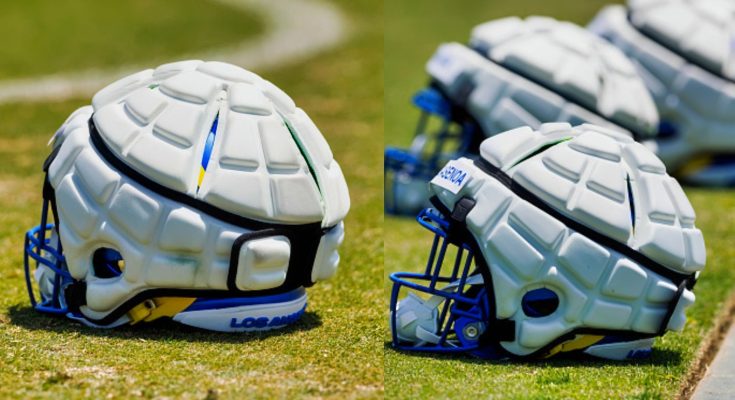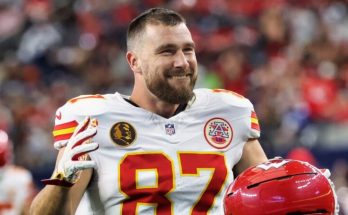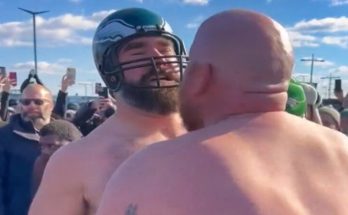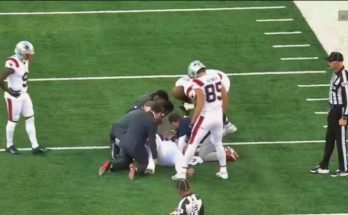The 2024 NFL season isn’t just about fresh new jerseys—some players are now wearing oversized, extra-padded helmets called Guardian Caps. So, what’s up with these new helmet add-ons? Where did they come from, and could we see every player wearing them soon?
As fall ushers in another football season, fans will notice a new twist in the usual lineup of helmets. Over the years, helmets have evolved significantly—from early 20th-century leather caps to the modern plastic versions we see today. However, in 2024, some helmets will look quite different. The NFL has approved Guardian Caps, padded accessories that fit over standard helmets, claiming they can cut down the impact of head collisions by up to 20%.
Not everyone is happy with this change. Some players find these add-ons bulky and awkward, and both fans and players have complained that they make heads look strangely oversized. As someone interested in the cultural history of football helmets, everyone is keen to see how this development unfolds. In a sport where helmets are a key symbol and marketing tool, it’s interesting to see how the need for safety might clash with the game’s iconic look. Here’s a quick rundown of what’s going on.
What Are Guardian Caps? 
Guardian Caps are soft-shell covers that fit over standard NFL helmets to enhance safety by reducing impact during player collisions. Designed to minimize the risk of concussions and head injuries, these caps provide an additional layer of protection. By adding extra padding to the areas of the helmet most prone to impacts, Guardian Caps help absorb and soften the force of collisions. Unlike the traditional hard-shell helmets, these caps offer a specific focus on safeguarding vulnerable spots, making them a valuable addition to player safety gear in football.

Guardian Sports, a company specializing in material and sports science, designed Guardian Caps. Initially, they aimed to create a “fully encompassed” soft-shell helmet to enhance safety in football. However, the idea faced resistance from football executives who were concerned about how drastically a full soft-shell helmet would alter the traditional “look and sound” of the standard hard helmets. In response to this pushback, Guardian Sports developed the Guardian Caps as an alternative, providing a compromise by adding a soft-shell covering to the existing hard-shell helmets instead of replacing them entirely.
When Did The NFL Begin Implementing Guardian Caps?
The NFL first introduced Guardian Caps at practices in 2020, though there were no permanent rules regarding their mandatory use at the time. These caps attach to the outside of players’ helmets using snaps and Velcro straps and feature a series of soft, rectangular pads connected by fabric.
After Guardian Caps were introduced initially in 2010, some college and professional teams slowly began adopting them for practice. The NFL took a significant step in 2022 by requiring their use during preseason practices, but this rule initially applied only to linemen and linebackers. By 2024, the NFL expanded the requirement, mandating that all players, except quarterbacks and kickers, wear Guardian Caps during practices. Then, in April 2024, the league announced that players could wear caps during regular season games.
The NFL has gathered data from all 32 teams to support the effectiveness of Guardian Caps. The data shows a 20% reduction in impact force from head-on collisions when both players are wearing the caps and a 10% reduction when only one player is wearing them. Some researchers remain skeptical of the NFL’s proprietary research data. Despite this, the league reports a dramatic 52% decrease in concussion rates during preseason practices since the Guardian Caps became mandatory.
Promoting the Guardian Caps’ safety benefits has been a significant public relations move for the NFL. Research into chronic traumatic encephalopathy (CTE) and other brain injuries continues to reveal the severe impact of repeated head trauma, which football players are particularly susceptible to. Many players have backed the league’s increased focus on safety. For example, Indianapolis Colts running back Jonathan Taylor became the first high-profile skill-position player to wear a Guardian Cap during a preseason game on August 11, 2024, showing his support for player safety.
Are NFL Players Required to Wear Guardian Caps? 
After several years of testing, the NFL officially mandated the use of Guardian Caps for specific positions starting in the 2022 training camps. In 2023, the league expanded this mandate to include preseason, regular-season, and postseason practices. This offseason, the NFL further extended the requirement to cover all positions except quarterbacks and specialists. However, players can choose not to wear Guardian Caps if they use one of the six new helmet models approved by the NFL and the NFL Players Association.
Since head-to-head contact is more common among certain positions, the league initially required only linemen, linebackers, tight ends, running backs, and fullbacks to wear Guardian Caps during practices. However, the NFL is expected to expand the requirement to include wide receivers and defensive backs soon. Quarterbacks, punters, and kickers are currently not required to wear Guardian Caps during practice. For regular season games, Guardian Caps remain optional for all players.
Are Player Complaints Hindering the NFL’s Adoption of Guardian Caps? 
The introduction of these Caps in the NFL hasn’t been an outright success—at least not yet. Despite their lightweight design, weighing less than 7 ounces (0.2 kilograms), many players feel that Guardian Caps are heavy and overly hot.
Seattle Seahawks defensive tackle Jarran Reed voiced his dislike, telling The Seattle Times, “I hate them. I understand the safety for them, but I’ve been playing a long time. It just looks crazy to me. I don’t like them. I’m ready to take them off.” Philadelphia Eagles cornerback Darius Slay expressed similar frustration to CBS Sports, saying, “I can’t stand them. It impacts my swag. My game is part of my swag. If I ain’t looking the part, I can’t feel the part.”
In a sport as fast-paced and physically demanding as football, even small differences—whether in comfort or psychological mindset—can affect a player’s performance. Players like Reed, Slay, and at least a dozen others appear unwilling to compromise their ability to perform at their best for what they see as minor safety improvements.
Do These Caps Actually Make a Difference?
This offseason, NFL executive Jeff Miller revealed that Guardian Caps have contributed to a nearly 50% decrease in concussions for the position groups mandated to use them. Guardian Sports reports that the caps reduce impact severity by 10% when worn by a single player. The reduction becomes more significant, reaching at least 20%, if both players in a collision are wearing Guardian Caps. Since their debut in 2022, the NFL has used these findings to demonstrate that Guardian Caps effectively reduce head-contact injuries.



